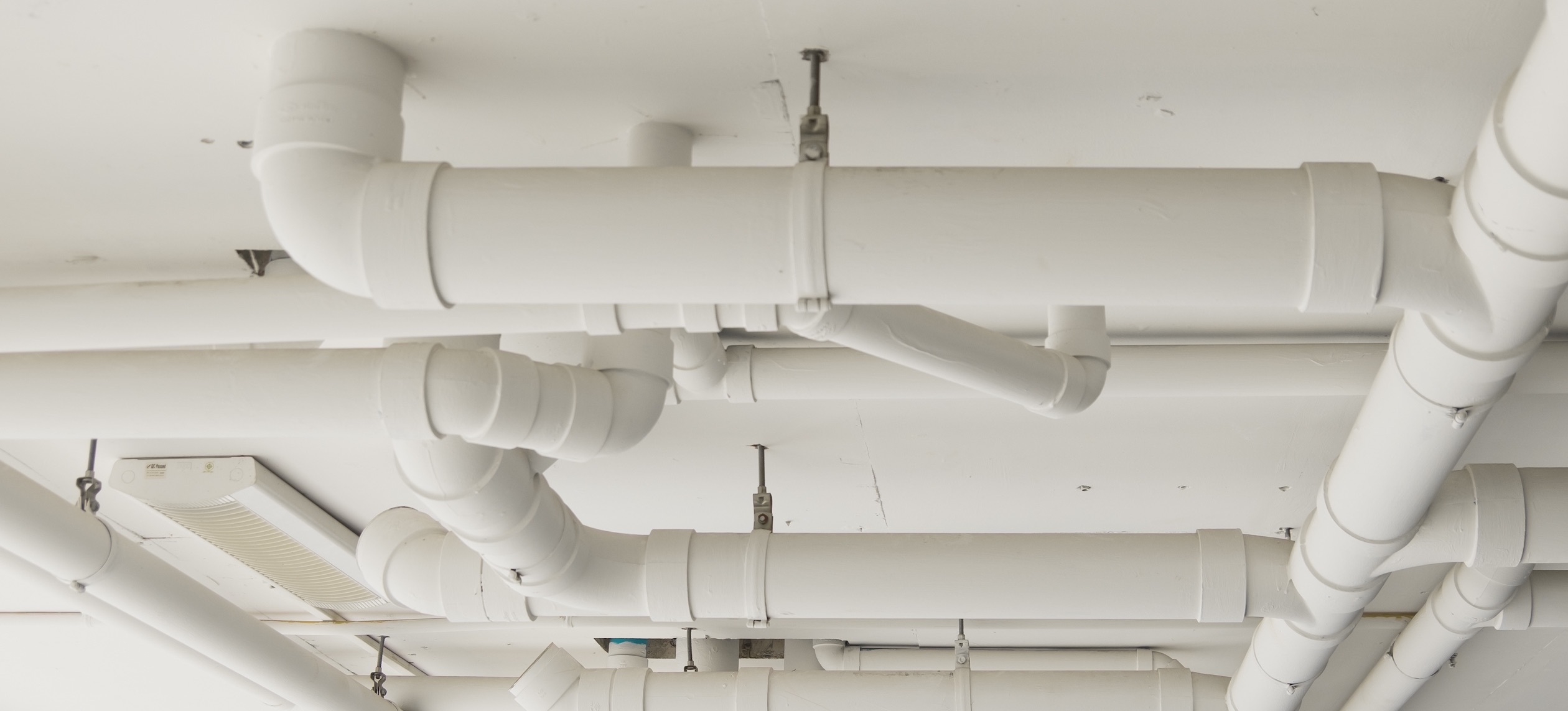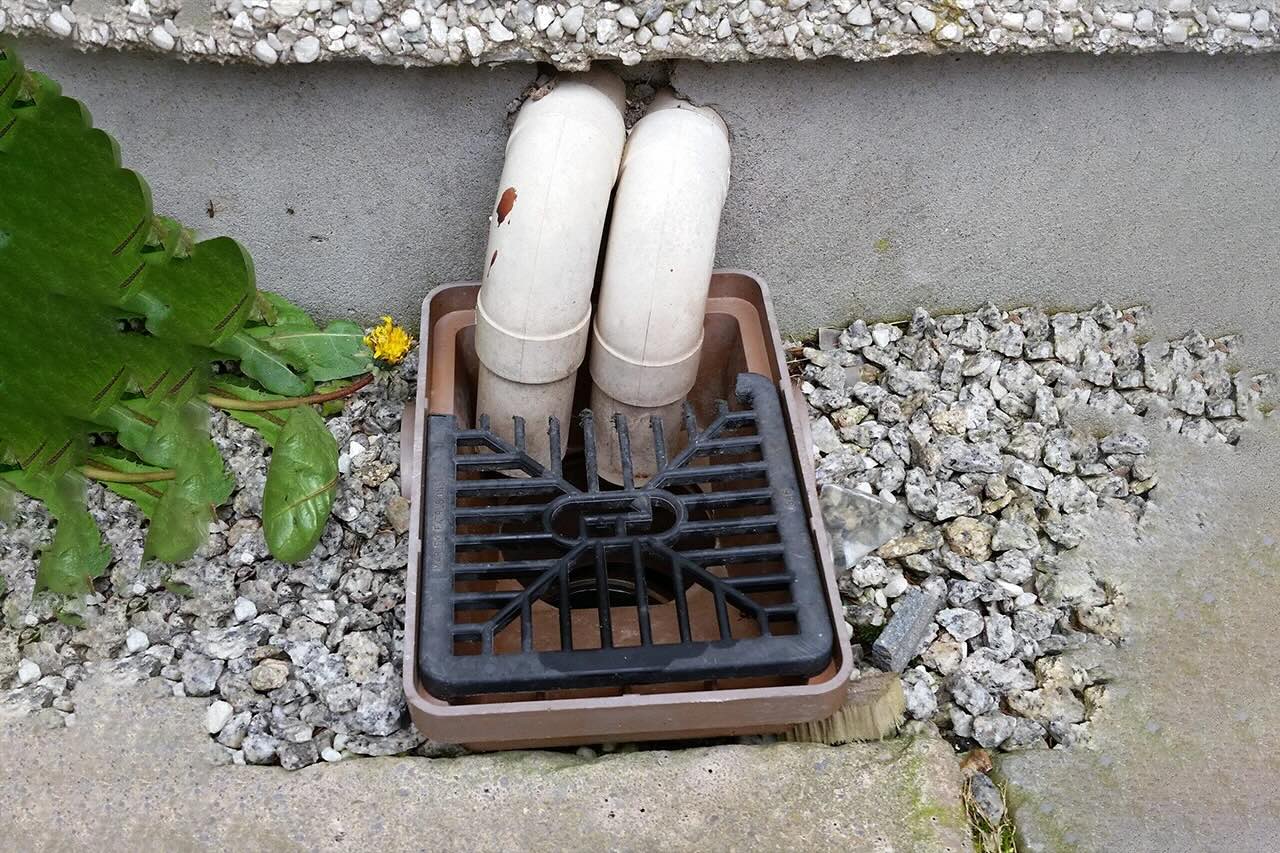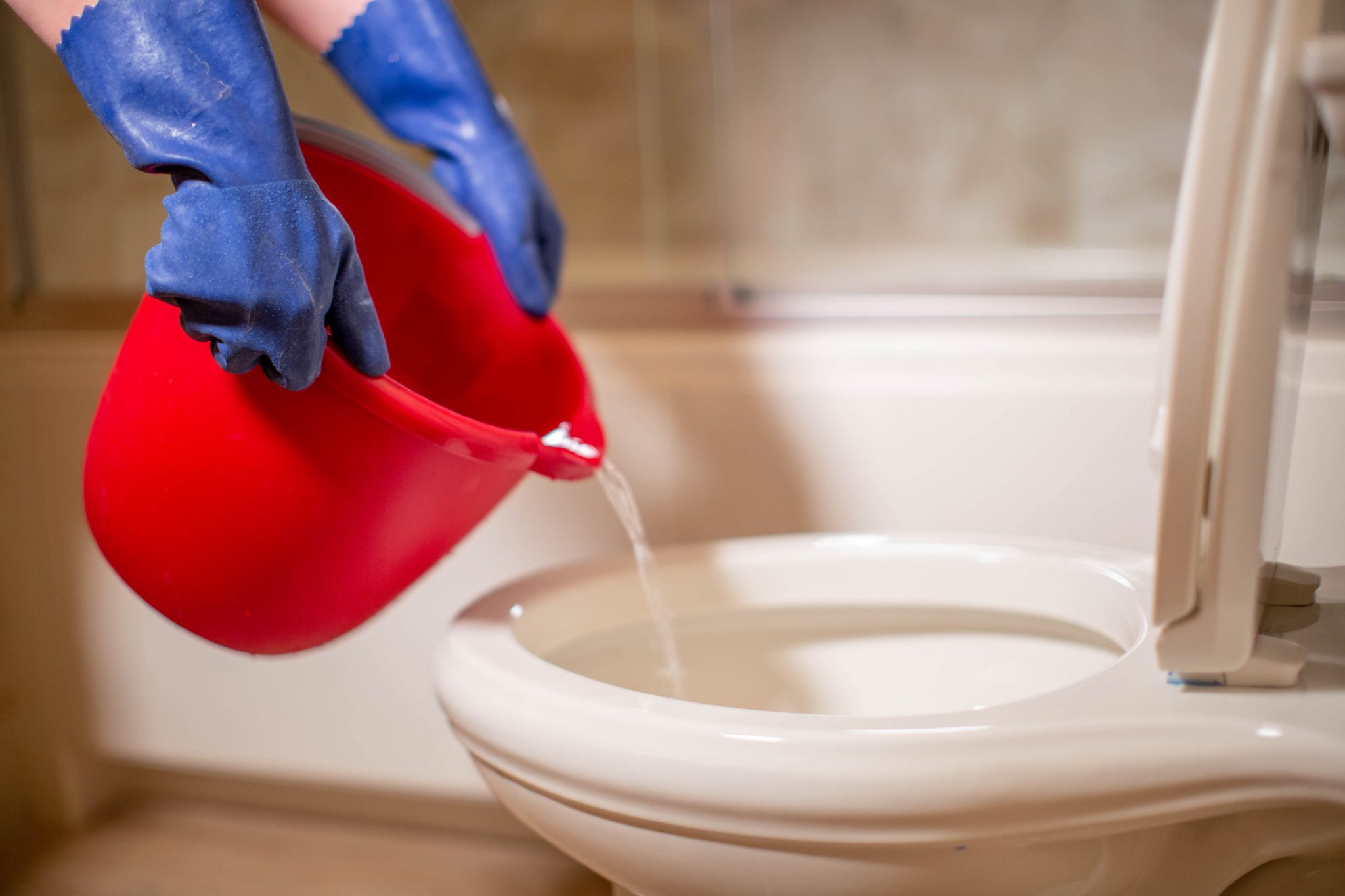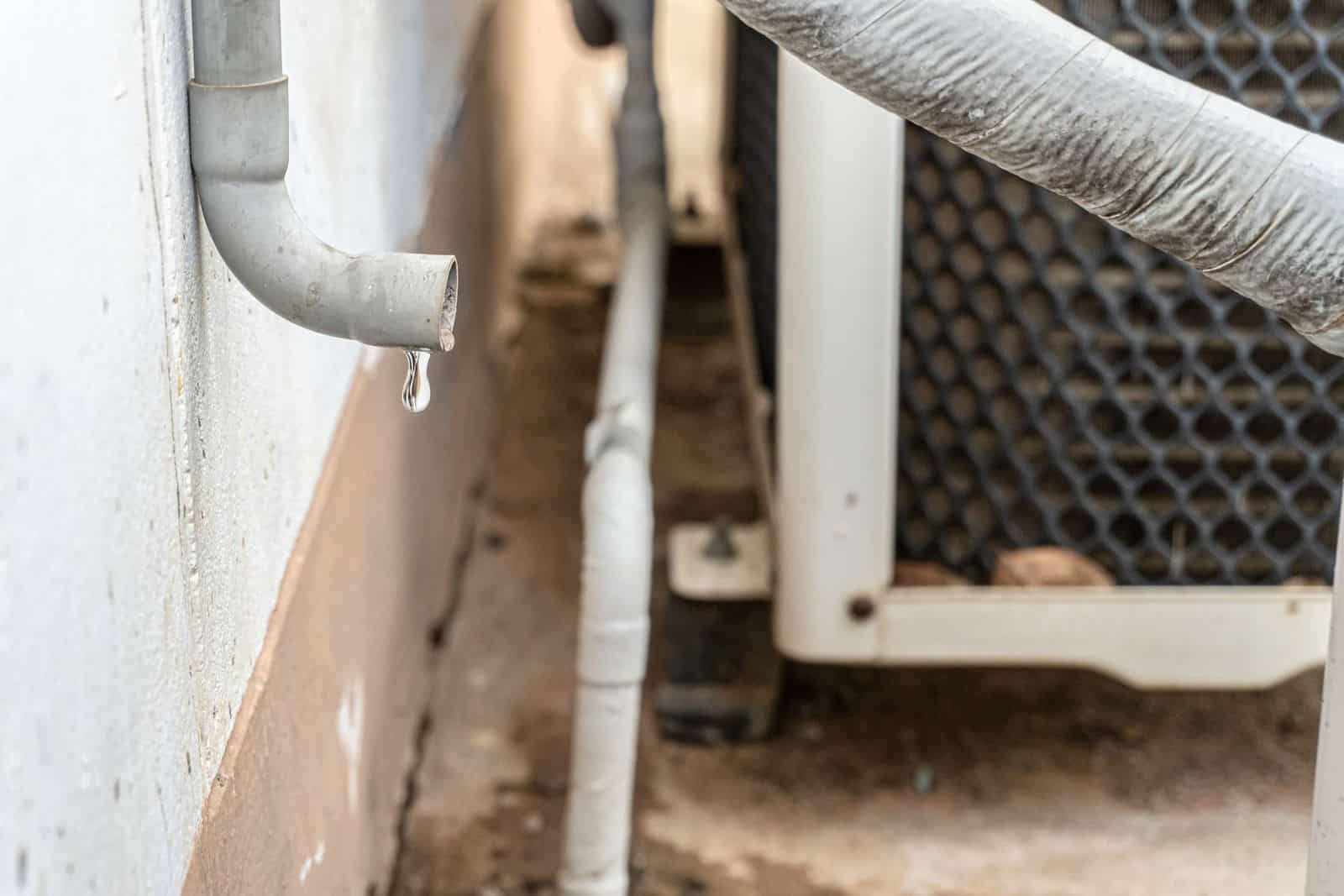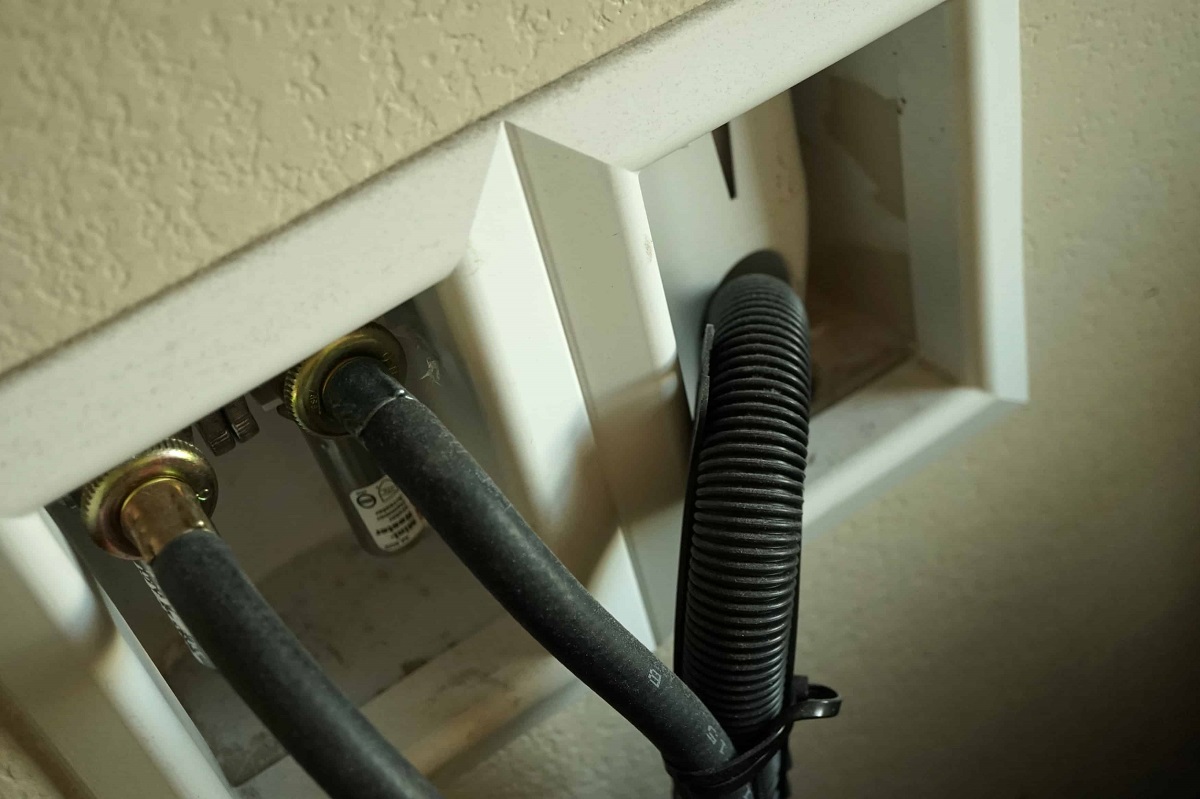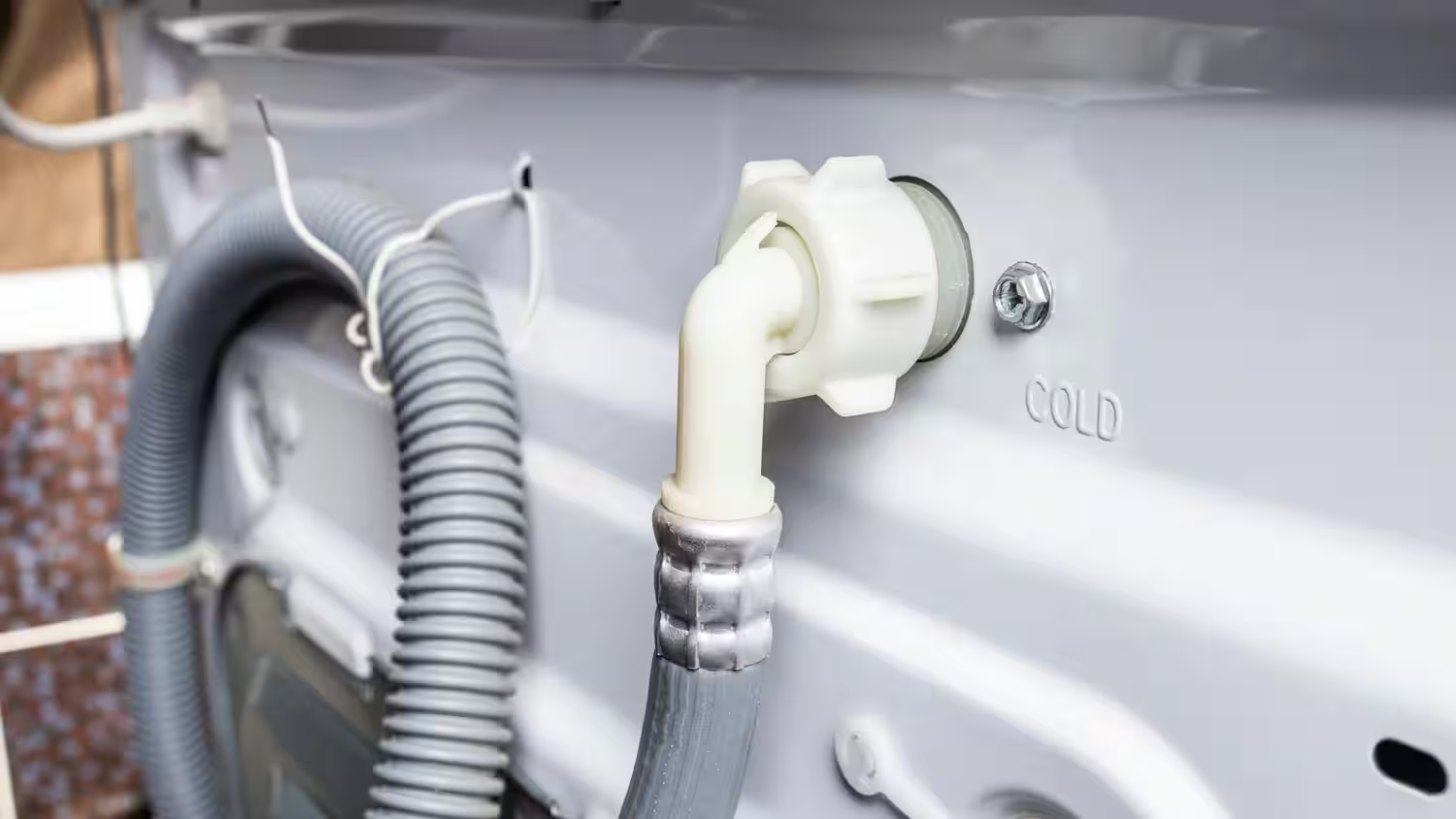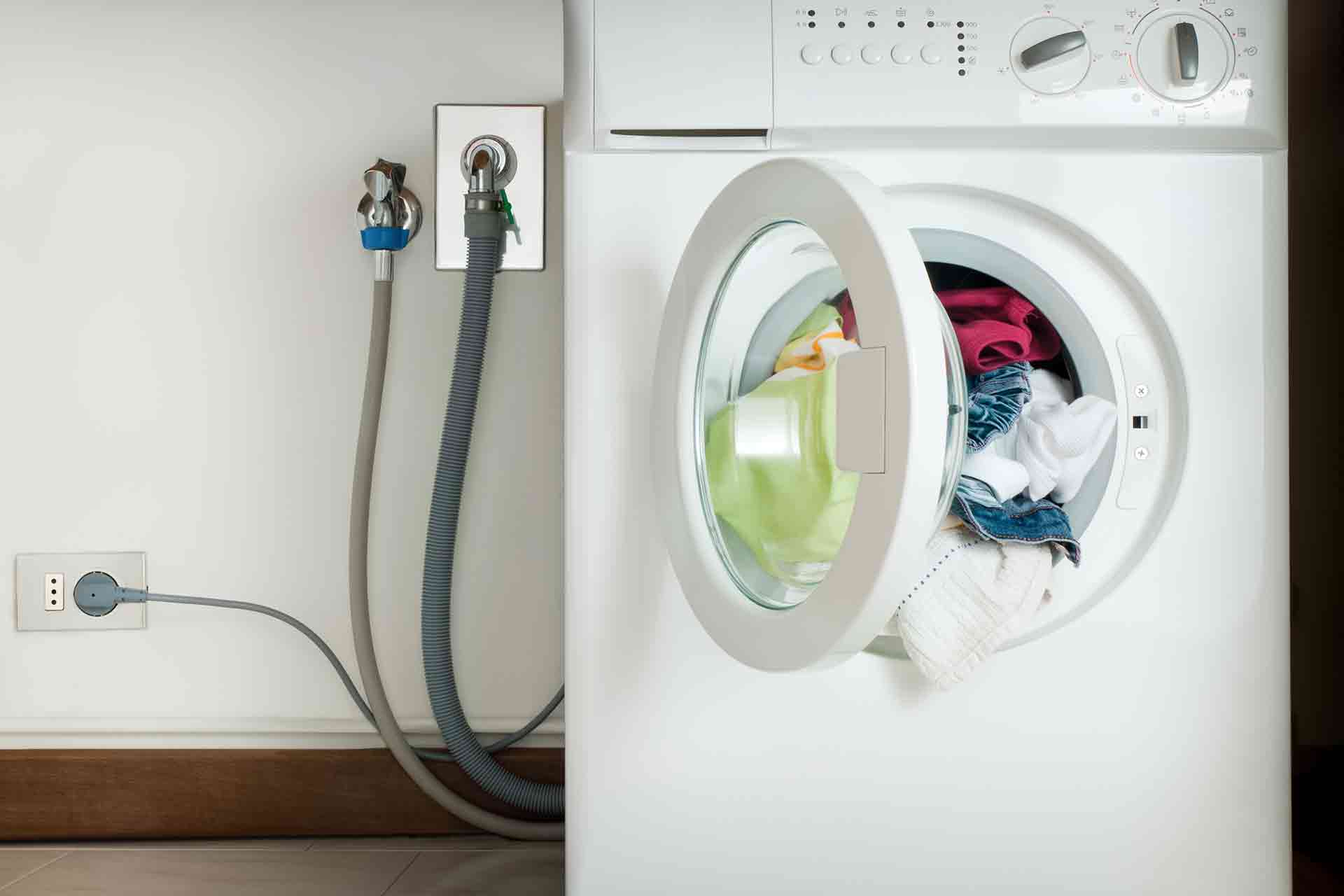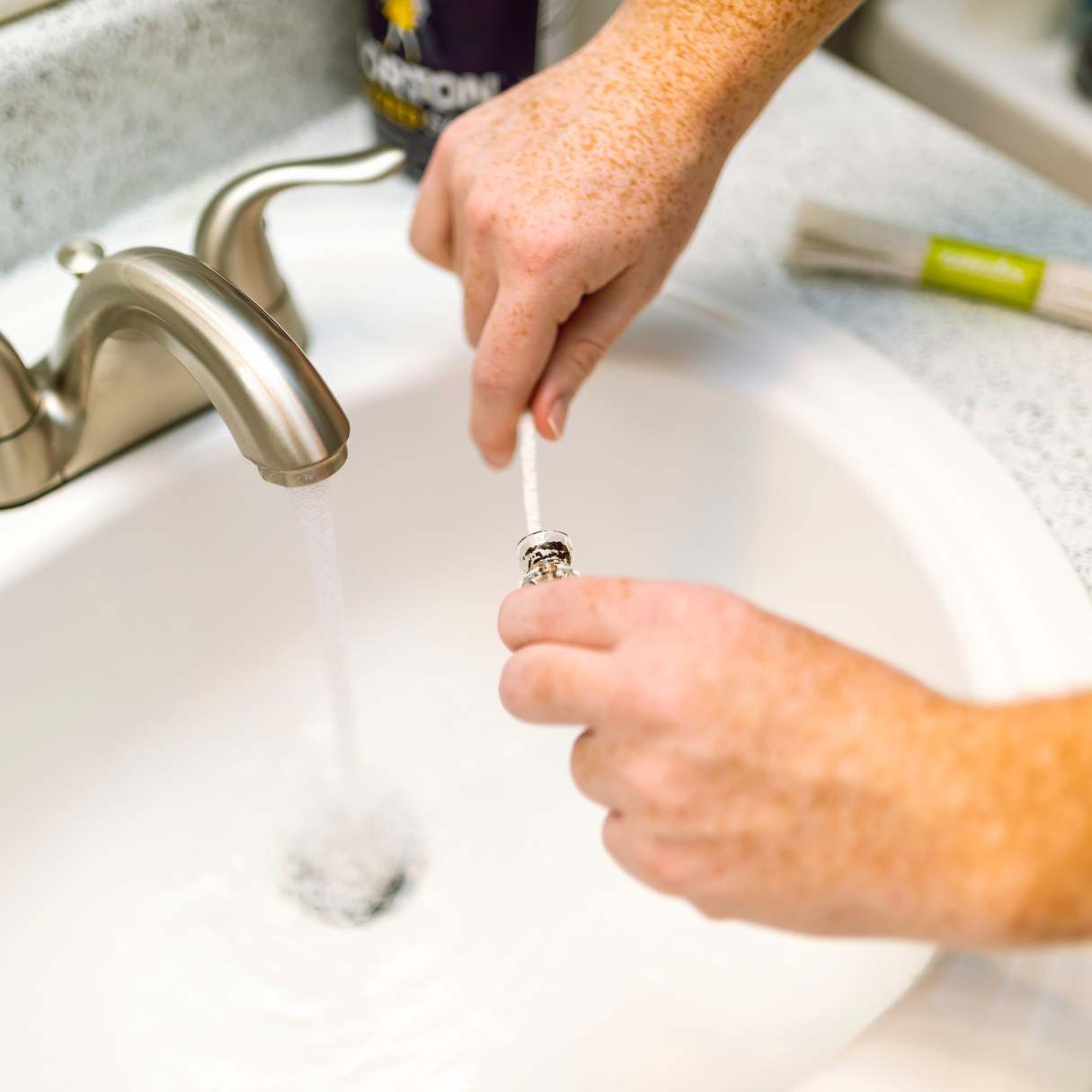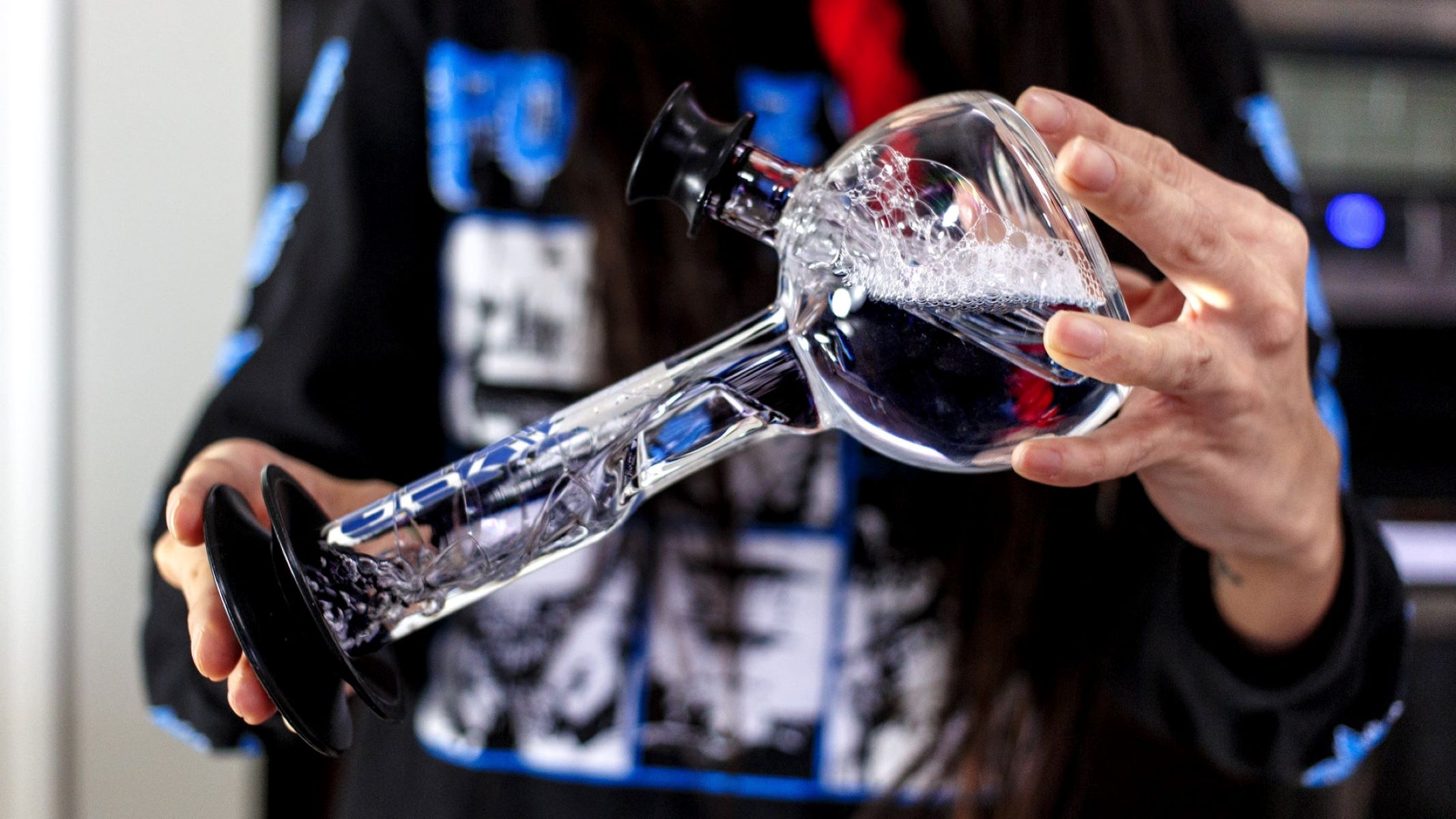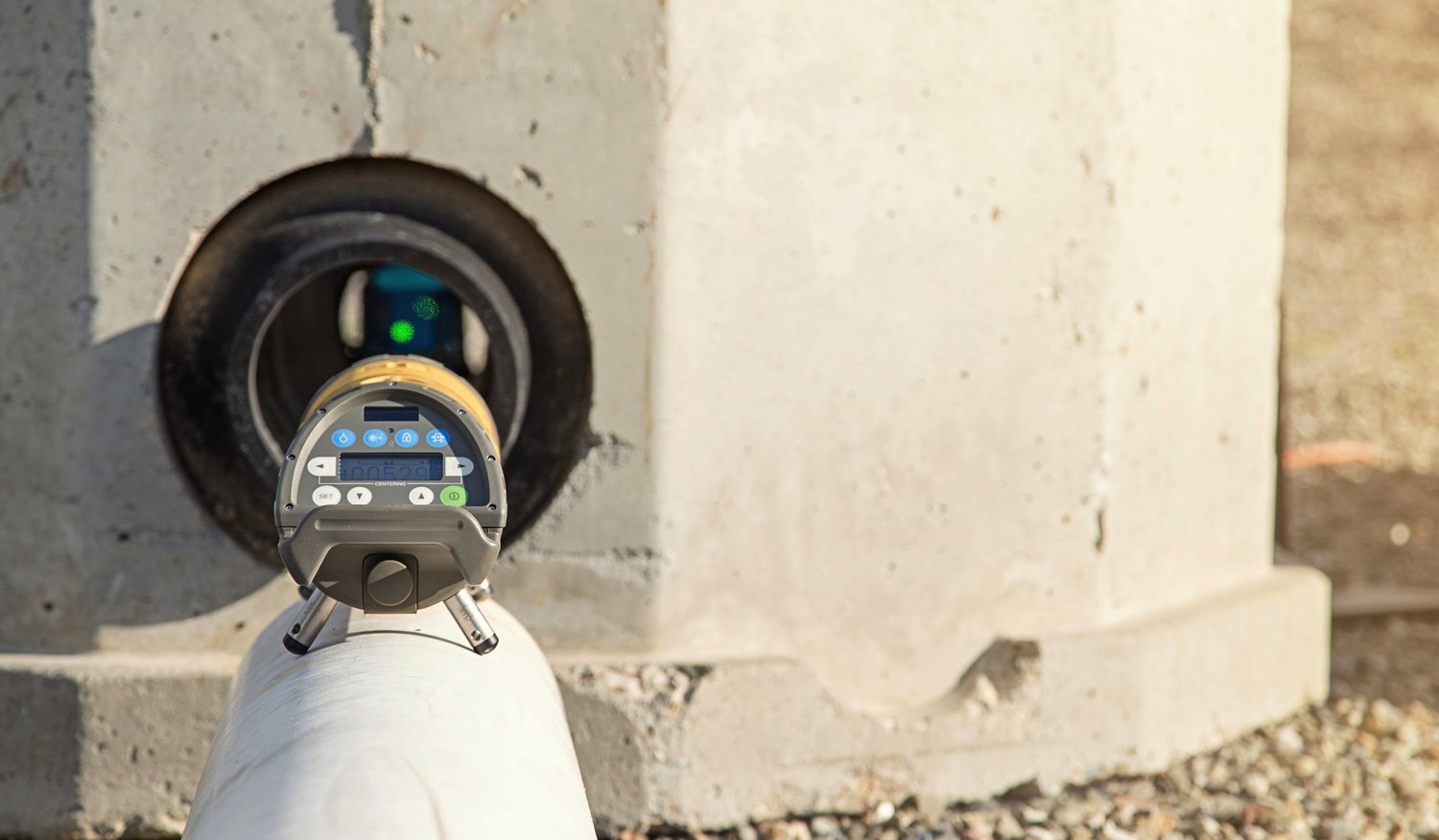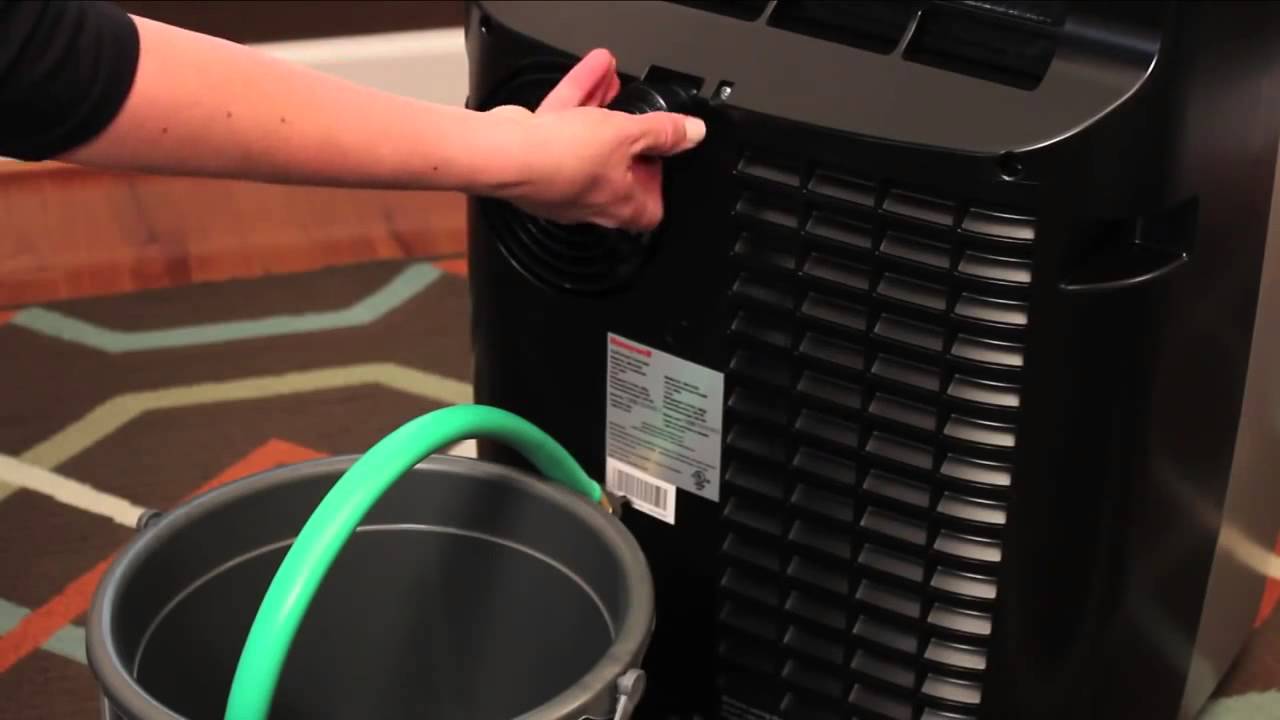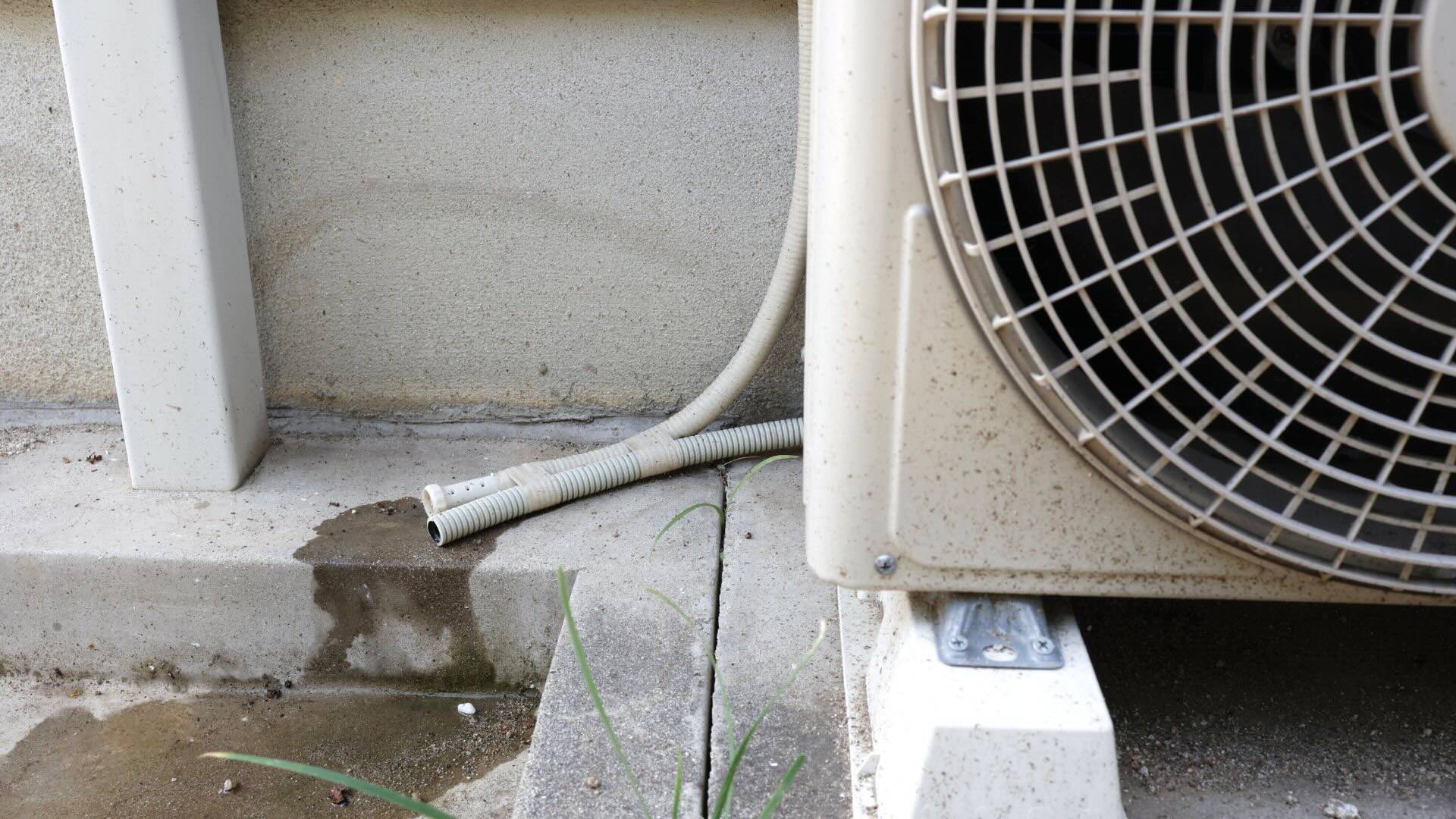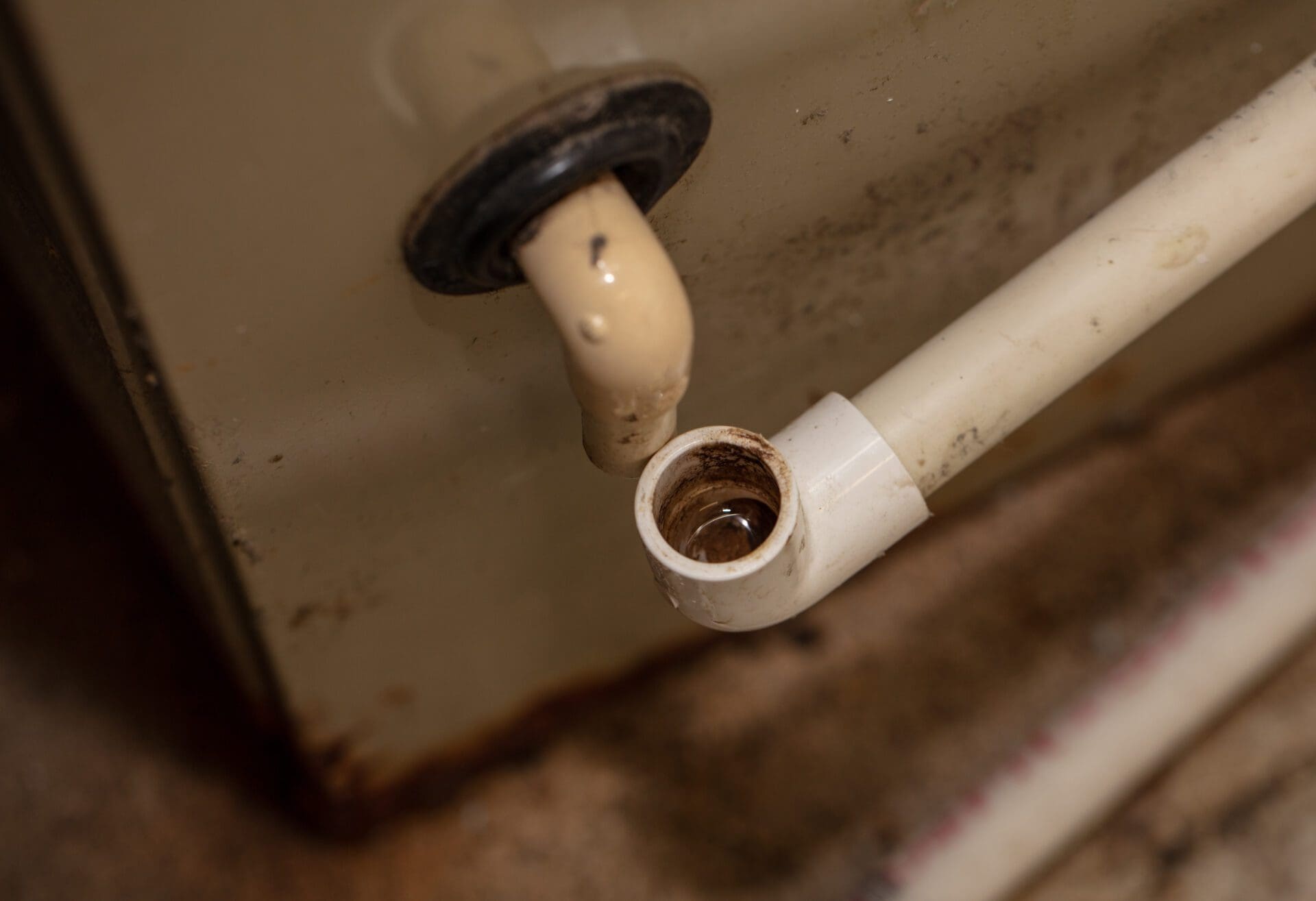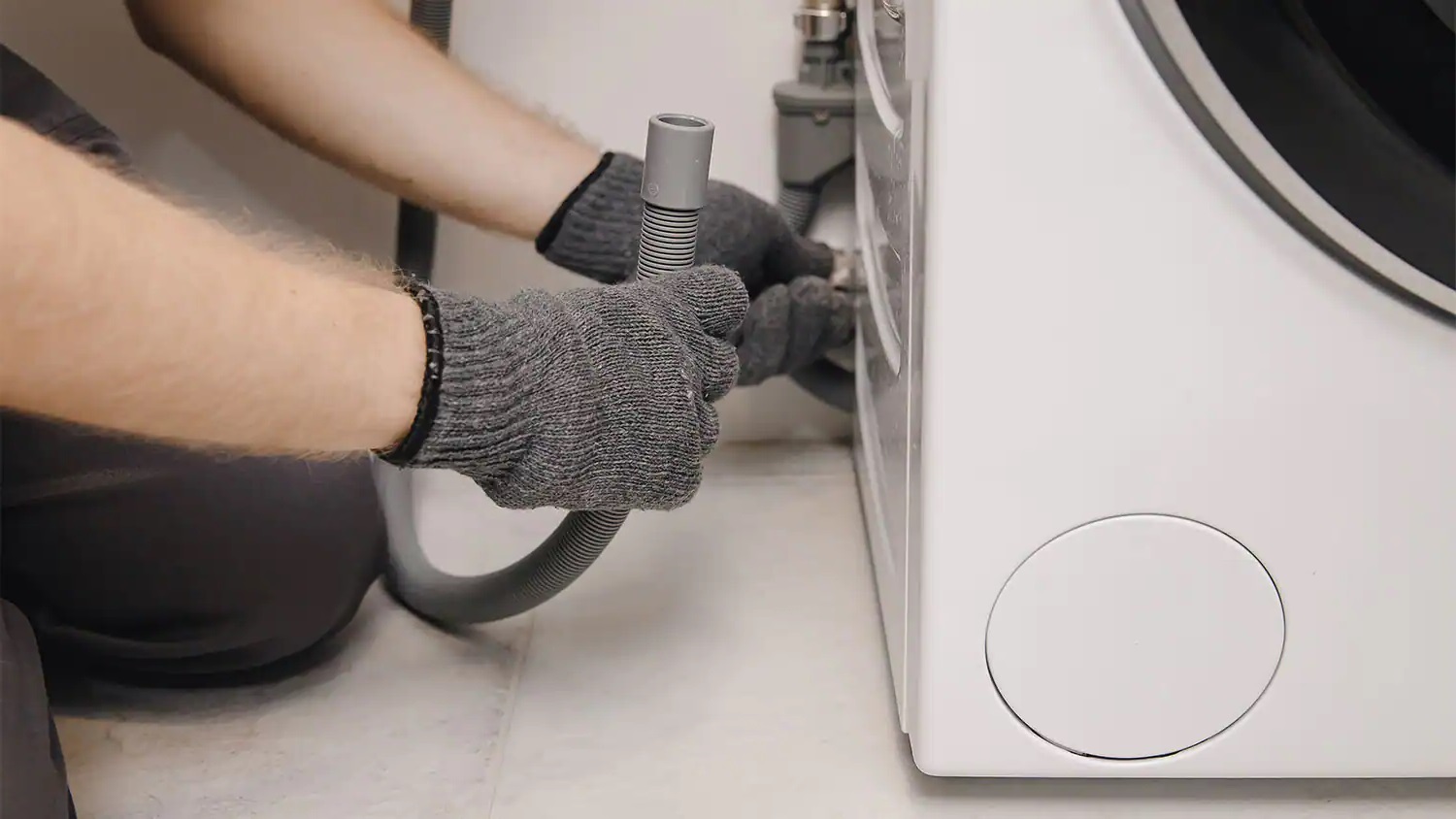Home>Home Maintenance>How To Clean Air Conditioner Drain Pipe
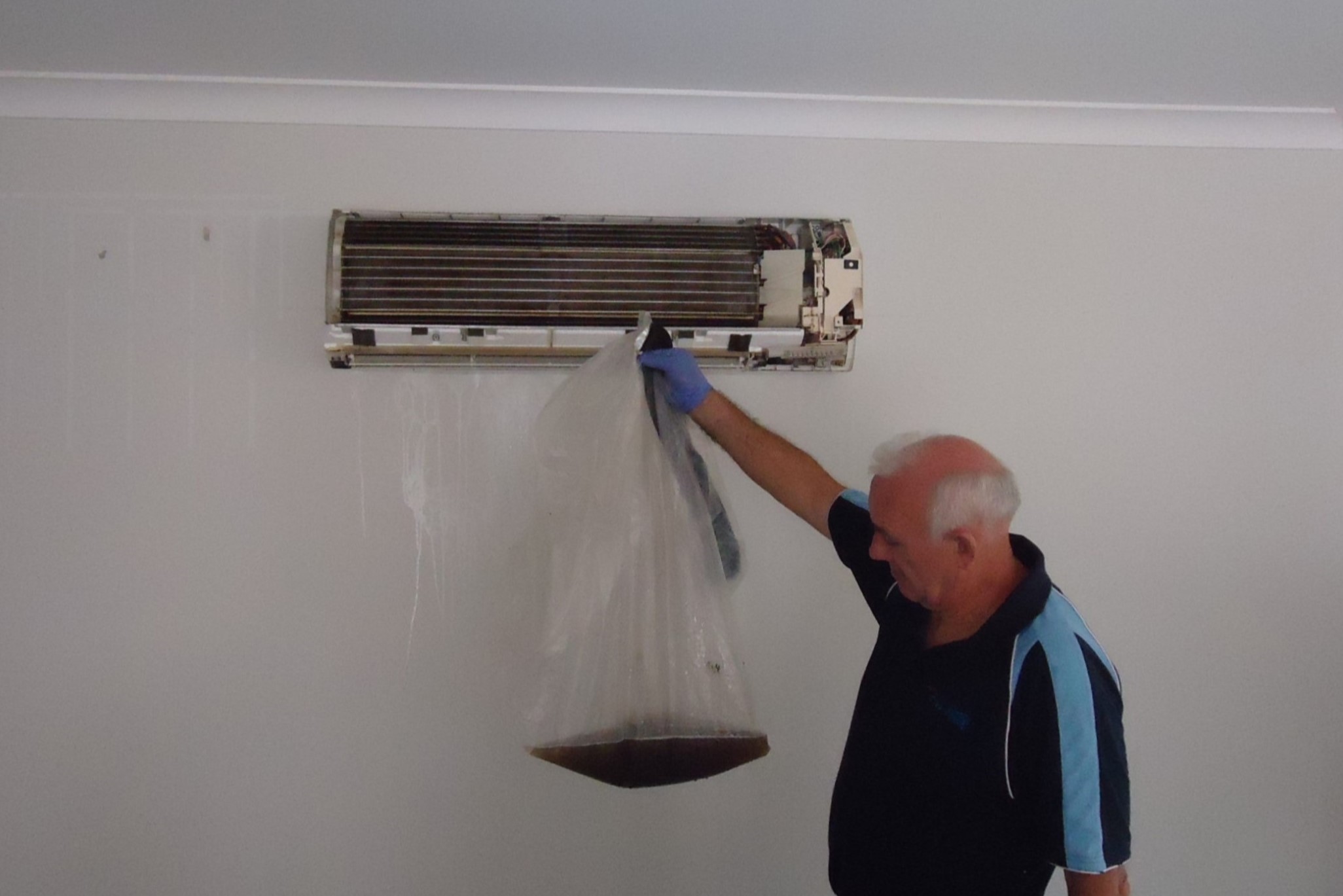

Home Maintenance
How To Clean Air Conditioner Drain Pipe
Modified: March 7, 2024
Learn how to clean your air conditioner drain pipe with this helpful home maintenance guide. Prevent clogs and keep your system running smoothly.
(Many of the links in this article redirect to a specific reviewed product. Your purchase of these products through affiliate links helps to generate commission for Storables.com, at no extra cost. Learn more)
Introduction
Maintaining a clean and properly functioning air conditioner is essential for a comfortable living environment. One crucial component of an air conditioner that often goes unnoticed is the drain pipe. The drain pipe plays a vital role in removing excess moisture from the air conditioning unit. However, over time, it can become clogged with dirt, debris, and algae, leading to a variety of issues.
In this article, we will explore the importance of cleaning the air conditioner drain pipe and provide you with a step-by-step guide on how to clean it effectively. We will also discuss the signs of a clogged drain pipe and provide some preventive measures to avoid future clogs.
Understanding the air conditioner drain pipe is the first step in maintaining the overall performance and longevity of your cooling system. During the air conditioning process, the evaporator coils inside the unit extract heat and moisture from the air, resulting in condensation. This condensation then drips into the drain pan and is funneled out through the drain pipe, preventing it from flooding the unit.
When the drain pipe is functioning correctly, it effectively removes the excess moisture. However, if it becomes clogged, several issues can occur. Firstly, the excess moisture can accumulate in the drain pan, resulting in water leakage or even flooding. This can lead to damage to your air conditioner, walls, and floors. Secondly, a clogged drain pipe can cause the growth of algae and mold, leading to foul odors and potential health hazards in your home. Lastly, a clogged drain pipe can reduce the efficiency of your air conditioner, leading to increased energy consumption and higher utility bills.
Cleaning the air conditioner drain pipe is a simple and cost-effective maintenance task that should be performed regularly. By keeping the drain pipe clean, you can ensure that your air conditioner operates efficiently, preventing any potential damage or health hazards.
In the following sections, we will discuss the signs of a clogged air conditioner drain pipe, the materials you will need to clean it, and the step-by-step process to effectively unclog the drain pipe. We will also explore alternative methods for unclogging and provide some preventive measures to avoid future clogs. So, let’s dive in and learn how to keep your air conditioner drain pipe clean and functioning properly.
Key Takeaways:
- Regularly cleaning your air conditioner drain pipe is essential to prevent water leakage, foul odors, and reduced cooling efficiency. It also helps avoid potential health hazards caused by clogged drain pipes.
- Implement preventive measures such as changing air filters, keeping the surrounding area clean, and using algaecide tablets to maintain a clear and efficient air conditioner drain pipe. Regular maintenance extends the lifespan of your cooling system.
Read more: How To Clean AC Drain Pipe
Understanding the Air Conditioner Drain Pipe
The air conditioner drain pipe, also known as the condensate drain pipe or condensate line, is a crucial component of your air conditioning system. Its primary function is to remove the excess moisture that is generated during the cooling process. Understanding how the drain pipe works and its importance will help you better maintain your air conditioner.
When your air conditioner is running, warm air is pulled into the unit through the return vents. The air passes over the evaporator coils, which are filled with refrigerant. As the warm air encounters the cold coils, the moisture in the air condenses into water droplets. This water then drips down into the drain pan, where it is collected.
To prevent this collected water from overflowing and causing damage, the drain pipe is connected to the drain pan. The water flows through the drain pipe and is safely directed outside or into a designated drainage area, such as a floor drain or a condensate pump.
The air conditioner drain pipe is typically made of PVC (polyvinyl chloride) or another durable material. It is designed to be slightly sloped, allowing gravity to assist in the proper drainage of the condensate. The size of the drain pipe can vary depending on the capacity of your air conditioner.
Unfortunately, despite its importance, the drain pipe is often overlooked during routine maintenance. Over time, the drain pipe can accumulate dirt, dust, algae, and other debris. This build-up can cause the drain pipe to become clogged, leading to a variety of issues.
A clogged air conditioner drain pipe can result in water leakage or flooding within your air conditioner unit and surrounding areas. The excess moisture can also create an ideal environment for the growth of algae, mold, and bacteria, leading to unpleasant odors and potential health risks. Moreover, a clogged drain pipe can impede the proper functioning of your air conditioner, reducing efficiency and increasing energy consumption.
Regularly cleaning and maintaining the air conditioner drain pipe is vital to ensure proper drainage and prevent these issues. The frequency of cleaning depends on various factors, such as the climate, humidity levels, and the overall condition of the drain pipe. Generally, it is recommended to clean the drain pipe at least once a year, preferably before the start of the cooling season.
In the following sections, we will discuss the signs of a clogged air conditioner drain pipe and guide you through the step-by-step process of cleaning it effectively. Additionally, we will explore alternative methods for unclogging the drain pipe and provide preventive measures to avoid future clogs. Now that you understand the importance of the air conditioner drain pipe, let’s move on to identifying the signs of a clog.
Signs of a Clogged Air Conditioner Drain Pipe
A clogged air conditioner drain pipe can lead to numerous problems if left untreated. Therefore, it’s important to be aware of the signs that indicate a potential clog in order to address the issue promptly. By recognizing the signs early on, you can prevent further damage and ensure the proper functioning of your air conditioning system. Here are some common signs to watch out for:
1. Water leakage: One of the most obvious signs of a clogged drain pipe is water leakage. If you notice water pooling around your air conditioner unit, there’s a high chance that the drain pipe is clogged. The excess moisture has nowhere to go and ends up overflowing from the drain pan. Water leakage can cause damage to your walls, floors, and furniture, so it’s important to address the issue as soon as possible.
2. Musty odors: A clogged drain pipe provides a perfect breeding ground for algae, mold, and bacteria. As these microorganisms grow and thrive in the stagnant water, they can release unpleasant musty odors into your home. If you detect a strong, foul smell near your air conditioner, it’s a clear indication that there’s a clog in the drain pipe.
3. Reduced cooling efficiency: When the drain pipe becomes clogged, it can impact the overall efficiency of your air conditioning system. The excess moisture that is not properly drained can interfere with the cooling process, making it harder for your air conditioner to maintain the desired temperature. If you notice that your air conditioner is struggling to cool your space effectively, there’s a possibility that a clogged drain pipe is to blame.
4. Strange sounds: Another sign of a clogged drain pipe is the presence of unusual sounds coming from your air conditioner. A gurgling or bubbling noise may indicate that water is unable to flow freely through the pipe due to a blockage. These sounds can be a warning sign that immediate action is needed to prevent further damage.
5. Increased humidity: When the drain pipe is clogged, the excess moisture in the air conditioning system cannot be properly removed. This can result in increased humidity levels in your home. If you notice that the air feels damp and sticky, even when the air conditioner is running, it likely means that the drain pipe is not functioning properly.
It’s essential to address a clogged drain pipe as soon as you notice any of these signs. Ignoring the problem can lead to more severe issues, including damage to your air conditioner unit and potential health hazards due to the growth of mold and bacteria.
In the next section, we will discuss the materials required to clean the air conditioner drain pipe and guide you through the step-by-step process of effectively unclogging it.
Materials Needed for Cleaning the Drain Pipe
Cleaning the air conditioner drain pipe is a relatively simple task that requires a few basic materials. Before you begin unclogging the drain pipe, make sure you have the following items on hand:
1. Protective gear: It’s important to prioritize safety while working with any maintenance task. Wear protective gloves to protect your hands from dirt, debris, and potentially harmful substances that may be present in the drain pipe. Additionally, using safety goggles or glasses will protect your eyes from any splashes or dislodged particles.
2. Screwdriver: A screwdriver will come in handy when accessing the air conditioner unit and removing the access panel to gain access to the drain pipe. The type of screwdriver may vary depending on the specific screws used in your unit, so be sure to have the appropriate screwdriver size or a multi-bit screwdriver that can accommodate different screw types.
3. Wet/dry vacuum cleaner: A wet/dry vacuum cleaner is an effective tool for removing any standing water in the drain pan and unclogging the drain pipe. The vacuum should have a narrow nozzle attachment to effectively reach into the drain pipe. Ensure that the vacuum is capable of handling both wet and dry substances.
4. Cleaning brush or pipe cleaner: To remove any debris, dirt, and algae buildup from the drain pipe, you will need a cleaning brush or pipe cleaner. Look for a brush or cleaner specifically designed for air conditioner drain pipes, as they are flexible and long enough to navigate the twists and turns of the pipe.
5. Mild detergent or vinegar: A mild detergent or white vinegar mixed with water can be used to clean the drain pan, as well as disinfect the drain pipe. These solutions help eliminate any potential odors caused by algae or bacteria. Ensure that the detergent or vinegar is diluted properly according to the instructions to avoid any damage to the system.
6. Bucket or container: You will need a bucket or container to collect any standing water that may be present in the drain pan or that comes out of the drain pipe during the cleaning process. This ensures that the water does not cause any mess or damage to your surroundings.
Optional:
7. Algaecide or bleach: If you frequently experience algae growth in your drain pipe, you can consider using an algaecide specifically designed for air conditioning systems. Alternatively, a diluted bleach solution can also help kill any algae or bacteria present in the drain pipe. However, exercise caution when working with bleach and follow the instructions carefully.
Remember to read the manufacturer’s instructions for any cleaning agents or equipment you use and follow proper safety precautions. With these materials ready, you are now equipped to effectively clean your air conditioner drain pipe. In the next section, we will guide you through the step-by-step process of cleaning the drain pipe.
To clean your air conditioner drain pipe, mix equal parts of water and vinegar and pour it down the pipe. Let it sit for 30 minutes, then flush with water. Repeat every few months to prevent clogs.
Steps to Clean the Air Conditioner Drain Pipe
Cleaning the air conditioner drain pipe is a task that can be easily done with some basic tools and a little bit of time. By following these step-by-step instructions, you can effectively unclog the drain pipe and ensure proper drainage of your air conditioning system:
Step 1: Turn off the air conditioner – Before you begin cleaning the drain pipe, make sure to turn off the air conditioner and unplug it from the power source. This ensures your safety while working on the unit.
Step 2: Locate the access panel – The access panel is usually located on the outside of the air conditioning unit. Use a screwdriver to remove the screws securing the panel and carefully take it off.
Step 3: Inspect the drain pan – Once the access panel is removed, inspect the drain pan for any standing water or debris. If there’s water present, use a wet/dry vacuum cleaner to remove it. Empty the water into a bucket or container.
Step 4: Clean the drain pan – After removing the water, clean the drain pan with a mild detergent or a mixture of vinegar and water. Use a sponge or cloth to wipe away any dirt or residue. This helps eliminate any potential odors caused by algae or bacteria.
Step 5: Locate the drain pipe – Inside the air conditioner unit, you will find the drain pipe connected to the drain pan. Follow the pipe to locate where it exits the unit or connects to the main drainage system.
Step 6: Clear the drain pipe – Use a cleaning brush or a pipe cleaner to clear any debris, dirt, or algae buildup from the drain pipe. Gently insert the brush or pipe cleaner into the pipe and rotate it to dislodge any clogs. Be careful not to apply excessive force or damage the pipe.
Step 7: Vacuum the drain pipe – After clearing the debris, use a wet/dry vacuum cleaner with a narrow nozzle attachment to vacuum out any remaining dirt or debris from the drain pipe. This step ensures thorough cleaning and helps prevent future clogs.
Step 8: Flush the drain pipe – Fill a bucket with a diluted bleach solution or water mixed with a mild detergent. Carefully pour the solution down the drain pipe to flush away any remaining residue and disinfect the pipe. This step helps remove any lingering odors and prevents the growth of bacteria or algae.
Step 9: Reassemble the unit – Once you’ve completed the cleaning process, reattach the access panel to the air conditioner unit using the screws. Ensure that the panel is securely fastened.
Step 10: Test the air conditioner – Plug in the air conditioner and turn it on to test its operation. Check for any leaks or unusual sounds. If everything appears to be functioning correctly, you have successfully cleaned the air conditioner drain pipe.
By following these steps regularly, ideally at least once a year, you can maintain a clean and efficient air conditioner drain pipe. However, if you are experiencing persistent issues or difficulties in unclogging the drain pipe, it may be advisable to seek professional assistance.
In the next section, we will explore alternative methods for unclogging the drain pipe, in case the standard cleaning process does not resolve the issue.
Read more: What Size Pipe For Toilet Drain
Alternative Methods for Unclogging the Drain Pipe
If the standard cleaning process does not effectively unclog your air conditioner drain pipe, there are alternative methods you can try. These methods can provide more force or specialized tools to dislodge stubborn clogs. Here are a few alternative methods for unclogging the drain pipe:
1. Using a wet/dry vacuum with a blow function: If you have a wet/dry vacuum cleaner with a blow function, you can reverse the airflow to blow air into the drain pipe. This can help dislodge the blockage and clear the pipe. Start by sealing the end of the drain pipe with a cloth or your hand, creating a tight seal. Then, switch the vacuum to the blow function and apply gentle pressure to blow air into the pipe. Be cautious not to use excessive force as it may damage the pipe.
2. Utilizing a plumber’s snake or auger: A plumber’s snake or auger is a flexible tool designed to navigate through pipes and clear blockages. To use this method, insert the snake or auger into the drain pipe and rotate it clockwise. As you push the tool further into the pipe, it will catch onto and break up the clogs. Keep repeating this motion until the clog is cleared, and then flush the pipe with water to ensure it is fully unclogged.
3. Employing a combination of hot water and vinegar: Hot water combined with white vinegar can be an effective and natural solution for stubborn clogs caused by mineral deposits or algae buildup. Mix equal parts of hot water and vinegar, and carefully pour the solution down the drain pipe. The hot water helps dissolve the clog, while the vinegar acts as a natural cleanser. Allow the solution to sit in the pipe for a few minutes, and then flush it out with clean water.
4. Using a commercial drain cleaner: Commercial drain cleaners can be used as a last resort if other methods fail. However, it is important to choose a drain cleaner specifically designed for air conditioner drain pipes. Follow the instructions provided by the manufacturer carefully, as some drain cleaners may contain harsh chemicals that could potentially damage the pipe or your air conditioner unit. Always prioritize safety and wear protective gloves and eyewear when working with drain cleaners.
Remember, while these alternative methods may be effective in unclogging the drain pipe, it’s important to exercise caution and use proper techniques to avoid damaging the pipe or the air conditioner unit. If you are uncertain or uncomfortable performing these methods yourself, it is recommended to consult a professional HVAC technician who can safely and efficiently address the issue.
In the next section, we will discuss preventive measures you can take to avoid future clogs in your air conditioner drain pipe.
Preventive Measures to Avoid Clogging in the Future
Taking preventive measures is key to maintaining a clean and free-flowing air conditioner drain pipe. By implementing these measures, you can minimize the chances of future clogs and ensure the efficient operation of your air conditioning system. Here are some preventive measures you can take:
1. Regular cleaning and maintenance: Perform regular cleaning and maintenance of your air conditioner, including the drain pipe, to remove any debris or buildup. Schedule a yearly cleaning, preferably before the start of the cooling season, or consider more frequent cleanings if you live in a humid climate or notice recurring clogs.
2. Change air filters regularly: Dirty or clogged air filters can restrict airflow and contribute to excess moisture in the air conditioning system. Check your air filters monthly and replace them as needed, usually every 1-3 months. Clean air filters help prevent debris from entering the drain pipe and reduce the risk of clogs.
3. Keep the surrounding area clean: Ensure that the area around the air conditioner unit is free from leaves, grass, dirt, and other debris. Trim any nearby vegetation that could potentially obstruct the airflow and contribute to clogging. A clear and clean area around the unit helps maintain proper operation and prevents debris from being pulled into the system.
4. Install a drain line trap: A drain line trap is a device that helps prevent clogs by capturing debris before it enters the drain pipe. It consists of a U-shaped bend in the drain line, which allows water to flow out while trapping larger debris. Installing a drain line trap can significantly reduce the risk of clogs and facilitate easier maintenance.
5. Use algaecide tablets or strips: Algae growth is a common cause of clogs in air conditioner drain pipes. To prevent this, consider using algaecide tablets or strips designed specifically for air conditioners. These treatments help inhibit the growth of algae and reduce the chances of clogs forming. Follow the manufacturer’s instructions for proper usage and dosage.
6. Regularly inspect the drain pipe: Keep an eye on the condition of the drain pipe and periodically inspect it for any signs of clogs or leaks. Look for standing water, mold, or unpleasant odors as these are indications of potential issues. Early detection allows for prompt action and prevents further damage.
7. Consider professional maintenance: If you’re not confident in your ability to clean or maintain the air conditioner drain pipe, it is recommended to seek professional maintenance. HVAC technicians have the expertise and tools to perform thorough inspections, cleanings, and maintenance to ensure the optimal functioning of your air conditioning system.
By implementing these preventive measures, you can enjoy a smooth-running air conditioner with a clear and efficient drain pipe. Regular maintenance and attentiveness to potential issues will help extend the lifespan of your air conditioner and prevent costly repairs.
As we wrap up, maintaining a clean air conditioner drain pipe is an essential part of home maintenance. By following the steps to clean the drain pipe, exploring alternative methods for unclogging, and taking preventive measures, you can ensure the proper functioning of your air conditioning system and enjoy a comfortable living environment.
Conclusion
Maintaining a clean and unclogged air conditioner drain pipe is crucial for the proper functioning of your cooling system. By understanding the importance of the drain pipe and recognizing the signs of a clog, you can address the issue promptly and prevent further damage to your air conditioner unit and home.
In this article, we have discussed the significance of the air conditioner drain pipe and the consequences of neglecting its maintenance. We have provided step-by-step instructions on how to clean the drain pipe effectively using basic tools and materials. Additionally, we explored alternative methods for unclogging the drain pipe and discussed preventive measures to avoid future clogs.
Regular cleaning and maintenance, changing air filters, keeping the surrounding area clean, installing a drain line trap, and using algaecide tablets or strips are all preventive measures that will help in maintaining a clean and functioning drain pipe. It is also important to regularly inspect the drain pipe and seek professional maintenance if needed.
By taking these proactive steps, you can ensure that your air conditioner operates efficiently, preventing water leakage, foul odors, reduced cooling efficiency, and potential health hazards caused by clogged drain pipes. Additionally, regular maintenance and cleaning of the drain pipe will contribute to the longevity of your air conditioning system, reducing the need for costly repairs or replacements.
Remember, safety should always be a priority when working with your air conditioner. If you are unsure or uncomfortable performing any maintenance or cleaning tasks, it is advisable to consult a professional HVAC technician who can provide expert assistance.
By following the information and recommendations outlined in this article, you can keep your air conditioner drain pipe clean, functional, and trouble-free, ensuring a comfortable and cool home environment for years to come.
Frequently Asked Questions about How To Clean Air Conditioner Drain Pipe
Was this page helpful?
At Storables.com, we guarantee accurate and reliable information. Our content, validated by Expert Board Contributors, is crafted following stringent Editorial Policies. We're committed to providing you with well-researched, expert-backed insights for all your informational needs.
